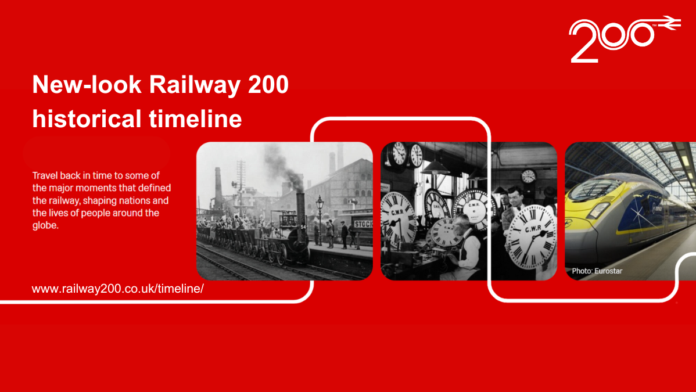A new interactive timeline has been launched, offering a comprehensive journey through the 200-year history of rail travel, from its humble beginnings to its modern-day iterations. The revamped timeline is part of the Railway 200 campaign, celebrating the bicentenary of the Stockton and Darlington Railway (S&DR) opening in 1825 – a pivotal moment that revolutionised transportation.
Developed in collaboration with the National Railway Museum, the timeline provides an engaging experience with maps, audio clips, explainer videos, and links to further resources. Expanding on its initial launch, it now features 65 key moments, charting the evolution of rail from the 1700s, when horse-drawn wooden tracks transported coal in the North East, to the present day and the recent rail nationalisation.
Visitors can explore a variety of interactive elements, including:
- A mapped route of Locomotion No.1’s inaugural journey on the S&DR, with descriptions of key points.
- Songs inspired by the Stockton and Darlington Railway, such as ‘My Dear Sister’ by Sam Slatcher.
- A Science Museum video on the impact of Stephenson’s Rocket.
- Information on Turner’s painting ‘Rain, Steam and Speed’, including a viewer vote for favourite railway art.
- A video journey on the Caledonian Sleeper, illustrating the introduction of sleeping carriages in the 1880s.
- A before-and-after slider image of the Forth Bridge.
- The British Film Institute’s centenary film about the railway.
- A Eurostar train tour and an explanation of how to drive one.
- Footage from DB Cargo, highlighting the role of freight trains in reducing carbon emissions.
Accessibility has been a key focus in the timeline’s development. Website lead Martyn Pennell commissioned accessibility experts to review the platform, ensuring it meets global standards and is usable by people with disabilities.
Martyn Pennell said: “We have tried to go beyond normal good practice, to understand how disabled users can navigate and interpret this material, rather than just rely on automated testing.”
Emma Roberts, Programme Manager for Railway 200, said: “It is important that we remember the story of the railway and its impact on British life, and the world. Not only does this new timeline capture and explain some great examples of British ingenuity through the ages, but it also shines a light on the social and economic changes made possible by the journeys and connections people made. We hope the addition of music, videos, maps, and links to explore subjects in more depth help to intrigue and inspire people of all ages to find out more about the game-changing impact of rail on our lives. We would love more young people to consider how they can play their part in the future of our railways.
“I’d like to thank the National Railway Museum, and all of our partners, for their support in bringing the Railway 200 timeline to life and making it a really useful, reliable source of information for everyone to enjoy.”
Oliver Betts, the National Railway Museum’s Research Lead said:
“The story of the railways is one of innovation, ambition, and transformation, and this timeline brings all of that to life in an engaging and accessible way. By combining our expert insights with a range of fascinating multimedia content, we hope to inspire new generations to explore the rich history of rail and its continuing impact on our society.”
You can view Railway 200’s new timeline at www.railway200.co.uk/timeline/




